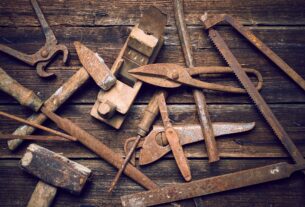If you’re a dental professional, you know how important it is to have the right tools for the job. One of those essential tools is the curette tool. In this comprehensive guide, we’ll take a closer look at what a curette tool is, its different types, how it’s used, and some tips on how to care for it properly.
What is a Curette Tool?
A curette tool is a small handheld instrument used in dentistry to remove plaque and tartar from teeth. It has a sharp-edged blade with a curved or angled tip and a handle that allows for precise control during use. The blade can be either single-ended or double-ended, depending on the type of curette being used.
Types of Curette Tools
There are several types of curette tools that dental professionals use, including:
1. Universal Curettes: These are the most commonly used curettes in dentistry. They have a semi-circular cross-section and are designed to work on both anterior and posterior teeth surfaces.
2. Gracey Curettes: These curettes have a more curved design than universal curettes and are intended for use on specific areas of the teeth. They are typically labeled with numbers that correspond to specific teeth and surfaces.
3. After Five Curettes: These curettes have an elongated blade with an angled tip that makes them ideal for removing calculus from deep periodontal pockets.
4. Columbia Curettes: These are similar to universal curettes but have longer blades that make them well-suited for scaling deeper pockets around molars.
How to Use a Curette Tool
Using a curette tool requires skill and precision. Here are the basic steps involved:
1. First, select the appropriate type of curette tool based on the area of the mouth you’ll be working on.
2. Next, hold the curette tool with a pencil grip and position it at a 45-degree angle to the tooth surface.
3. Gently insert the tip of the curette into the space between the tooth and gum tissue, being careful not to damage the soft tissue.
4. Once the curette is in place, use a scraping motion to remove any plaque or tartar buildup from the tooth surface.
5. Repeat this process for each tooth, moving around the mouth as necessary.
Tips for Proper Care and Maintenance
To ensure your curette tool stays in good condition and lasts as long as possible, it’s important to follow these care and maintenance tips:
1. Clean your curette tool thoroughly after each use using warm water and a mild soap or detergent.
2. Sterilize your curette tool using an autoclave or chemical sterilization method before using it again.
3. Inspect your curette tool regularly for signs of wear or damage, including dull blades or bent tips.
4. Store your curette tool in a dry, clean location where it won’t get damaged or exposed to moisture.
In Conclusion
The curette tool is an essential dental instrument that helps dental professionals provide effective oral care to their patients. With its different types and precise design, it makes removing plaque and tartar buildup from teeth easier and more efficient. By following proper care and maintenance practices, you can ensure your curette tool remains an effective part of your dental toolkit for years to come.
References:
– https://www.dentalcare.com/en-us/professional-education/ce-courses/ce52/curettes-and-scalers
– https://www.colgateprofessional.com/education/patient-education/topics/scalers-and-curettes
– https://www.dentistryiq.com/dental-hygiene/products/article/14204829/how-to-use-curettes-and-scalers-for-effective-plaque-removal




